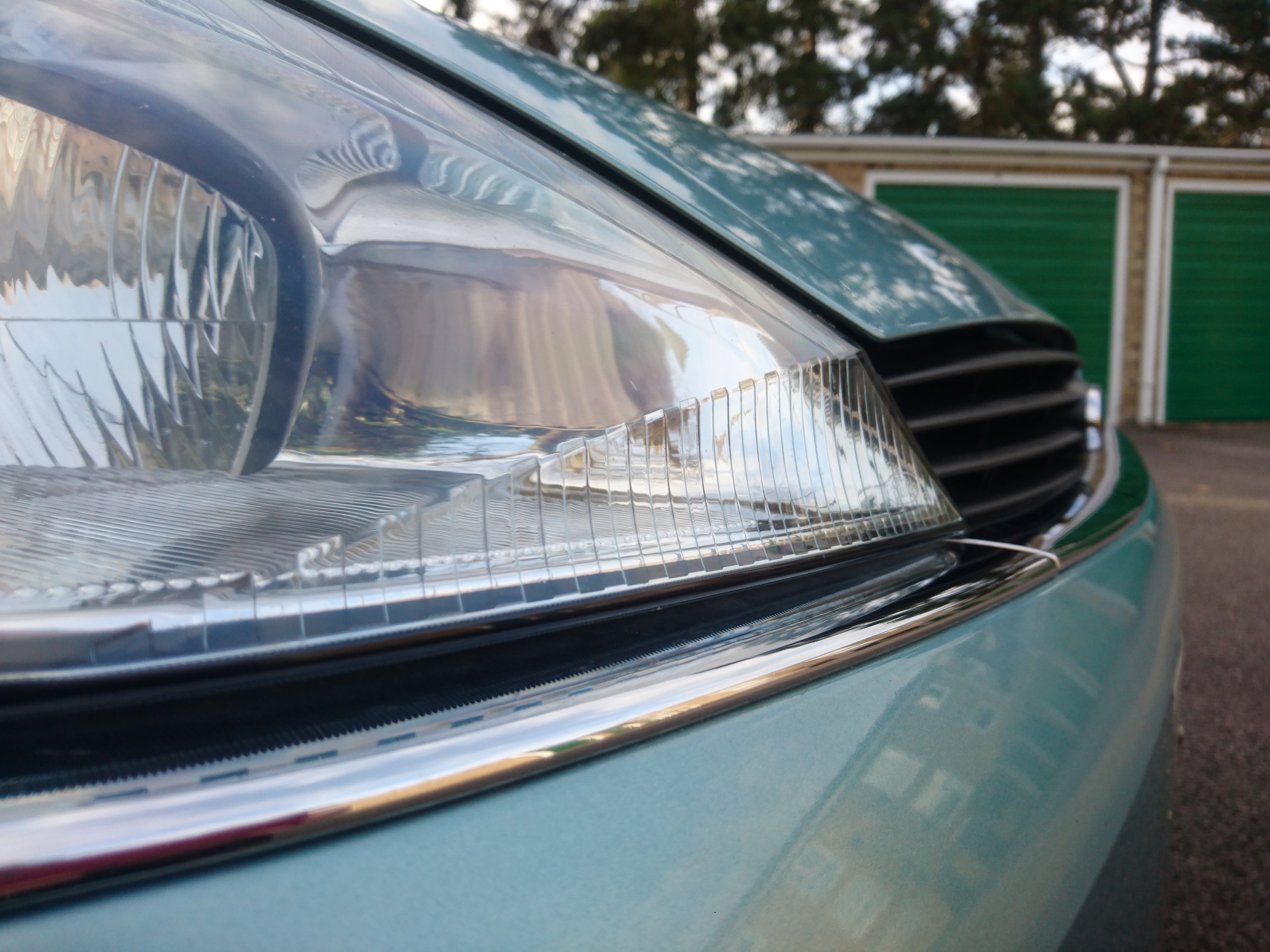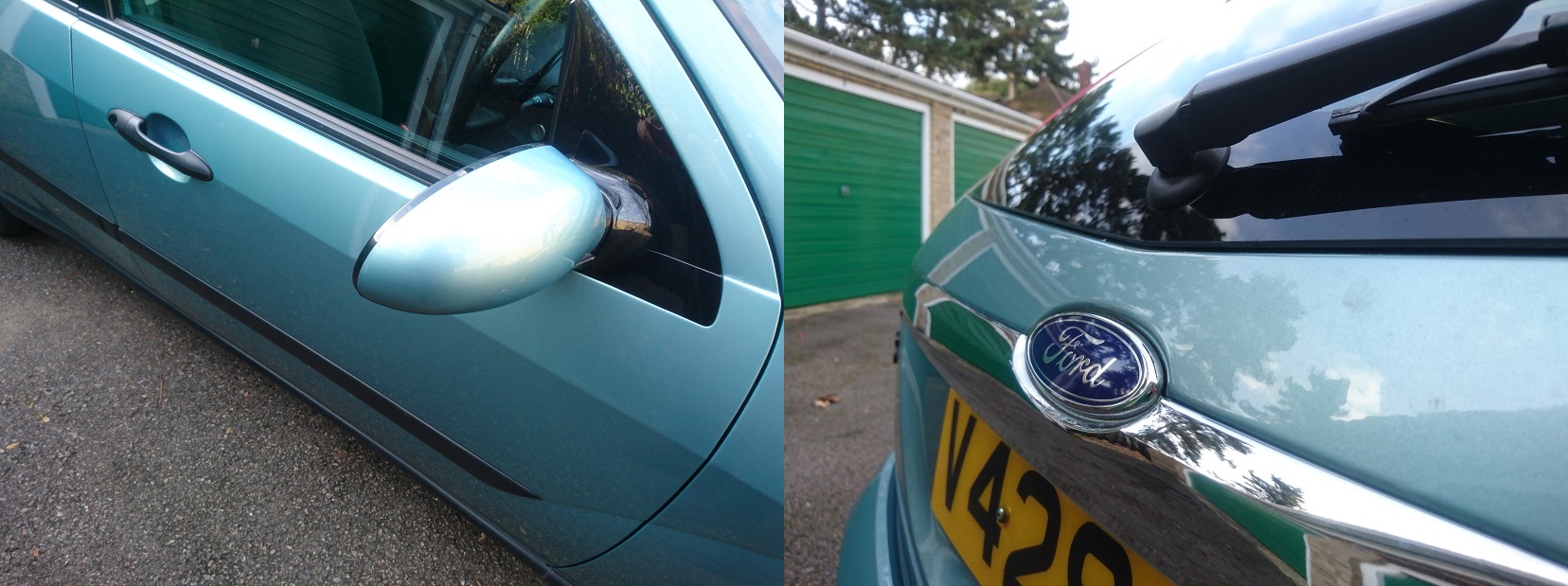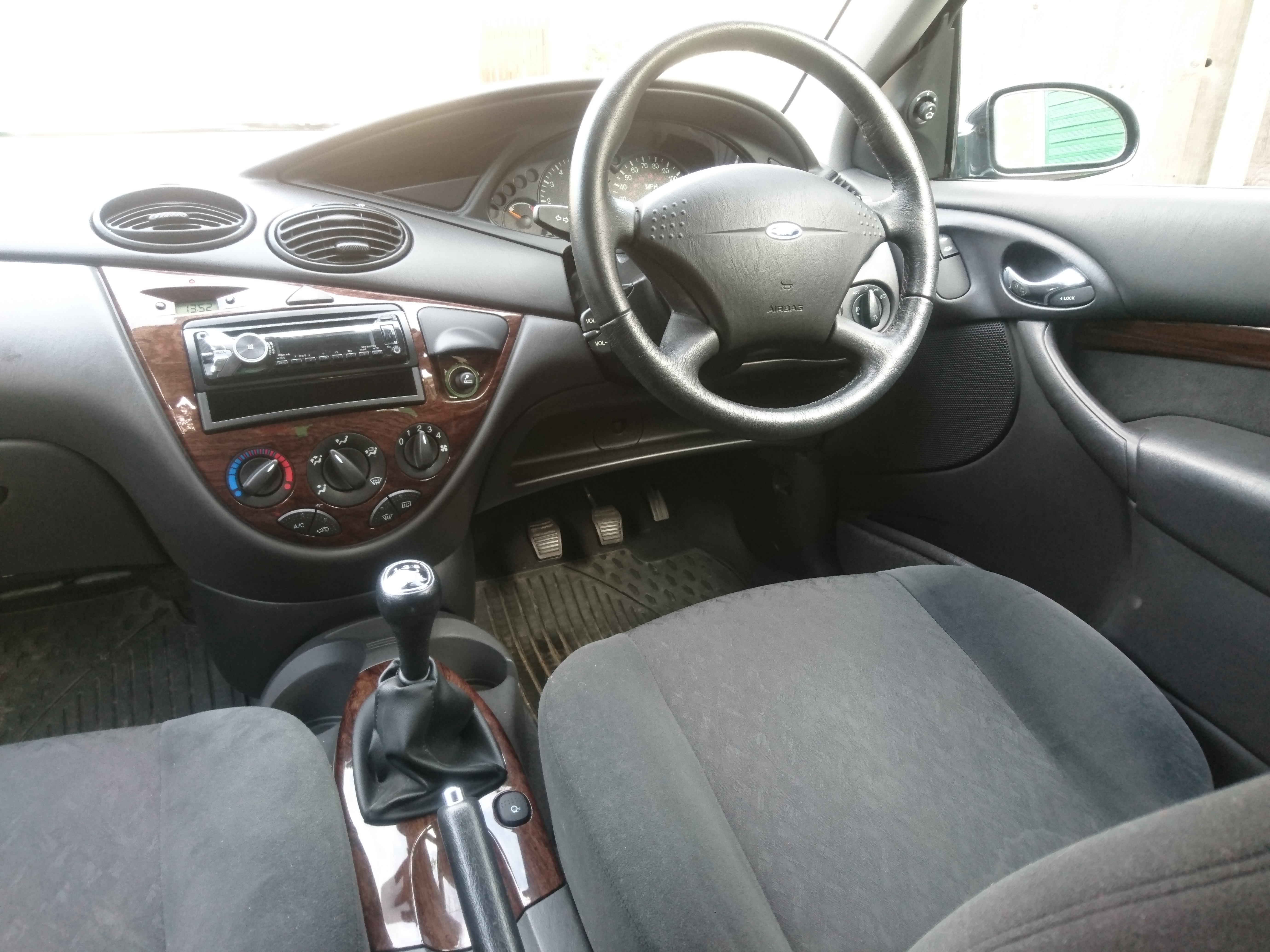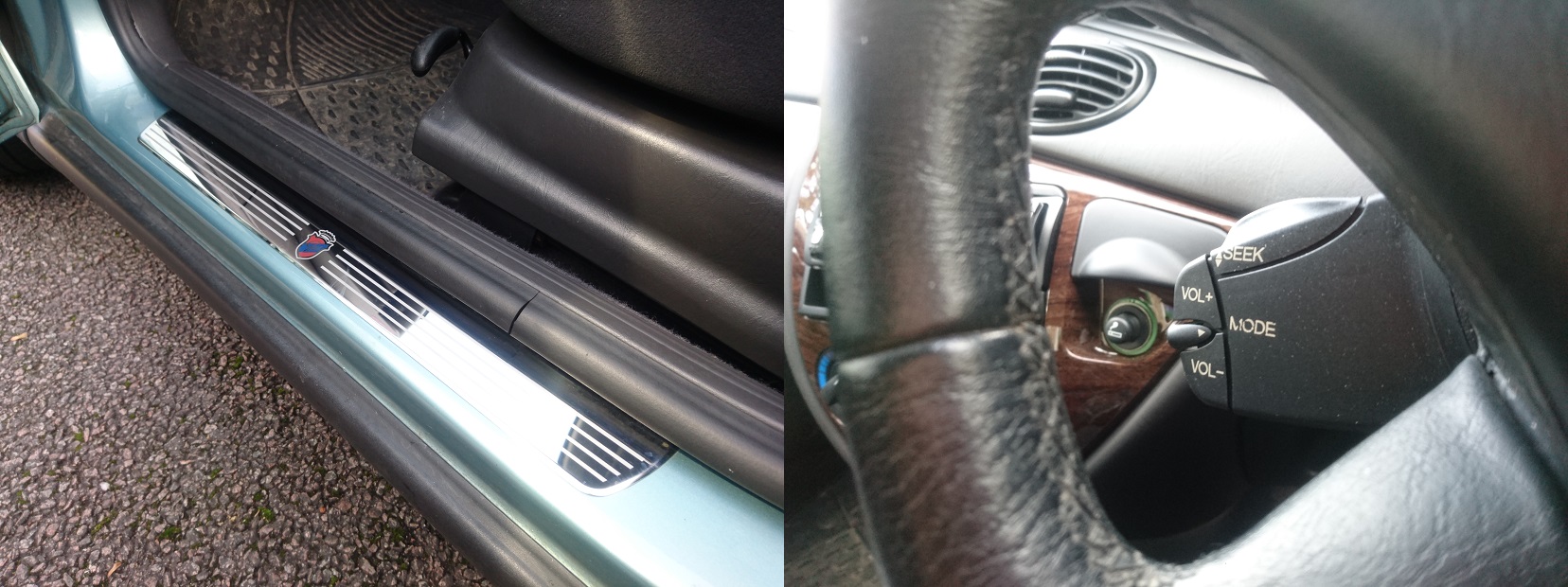Ford used to add extra insulation in their Ghia models. This, of course, did not make them Jaguars. But how big is the gap really? Having stepped down from a line of luxury marques into a Ghia badged Focus, I invite you to take a faux-suede seat and find out what remains and what’s lost.
Trim
 Like a chocolate on the pillow, or wool-lined gloves, often luxury is in the details. Approaching the Focus Ghia, you’d be forgiven for missing the chromed plastic underlining the headlights but at a side view you’ll see Ford’s most obvious warning of luxury – the Ghia badge. Maybe that’s why they’ve gone so over the top with the new Vignale models. As every other manufacturer makes sure, the unprivileged must be informed how subtly ensconced in luxury these preferred customers are. But does the plastic chrome add up?
Like a chocolate on the pillow, or wool-lined gloves, often luxury is in the details. Approaching the Focus Ghia, you’d be forgiven for missing the chromed plastic underlining the headlights but at a side view you’ll see Ford’s most obvious warning of luxury – the Ghia badge. Maybe that’s why they’ve gone so over the top with the new Vignale models. As every other manufacturer makes sure, the unprivileged must be informed how subtly ensconced in luxury these preferred customers are. But does the plastic chrome add up?
The chrome on the boot-lid is certainly an improvement on the coarse matt piece on the standard models, and, along with the glossy black window panels, punctuates its bodywork at a higher level than crude, greying with age, plastic. Of course, it’s still all plastic and not the metalwork trim on some cars of the period. Almost as if afraid of pretentiousness, this early Ghia is only half-colour coded with its side-skirts and door-handles in the hardy plastic that can still handle the streets.
Inside, chromed door handles, something like suede, ‘wood’ on the doors and in the incredible form of a triangle on the dash together conspire to inspire some mood of luxury which at least works better than the ‘aluminium’ in the Zetec version. In fairness, it’s not too far off entry level executive cars of the age, and arguably more subtle than some. Some authenticity can be recovered with the leather steering wheel and gearstick, also where the Ford badge and gearbox linkage map are tidily and tastefully laminated.

The finish is remarkably good, and most surfaces are soft which qualifies it for today’s interior requirements for a ‘quality interior’. More worthy of praise inside is the robustness of panels and switches, lack of visible bodywork, and that noticeably cheap plastic is reserved for only the steering column radio controls, and even then it could be worse. It’s in no real danger of being recycled into a seaside bucket and spade.
For a car of its standing, the interior is cosseting and exterior convincing enough to be proud amongst higher company, if not quite as tall. The wood and chrome trim is well placed around a characterful cabin design that pulls off being nice better than any other competitor in its class. Its details are humble but distinct, and add up to an ambience deserving of the hopeful Ghia badging. There’s a small sense of dignity, durability, and quality here that overwhelms even the largest chocolate on the pillow – at least that’s what you can tell the show-offs with electric rear windows.


